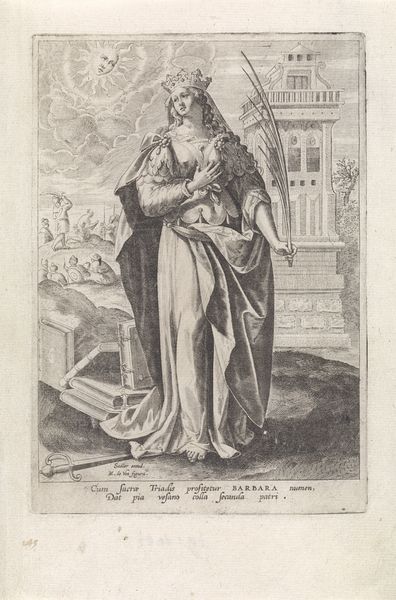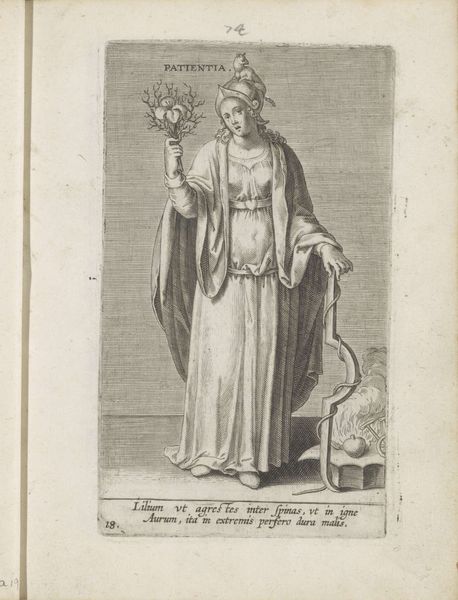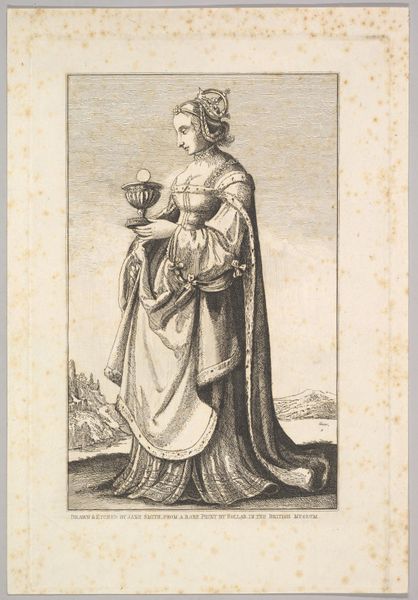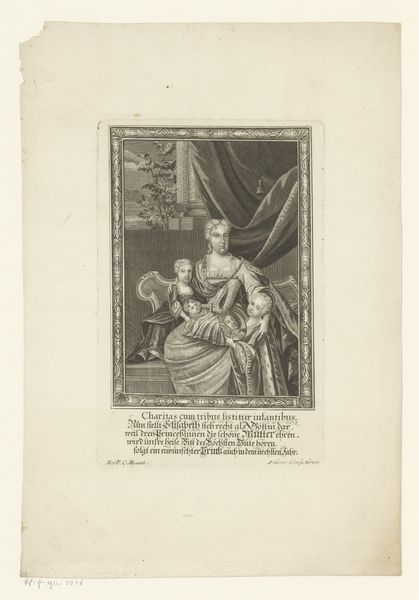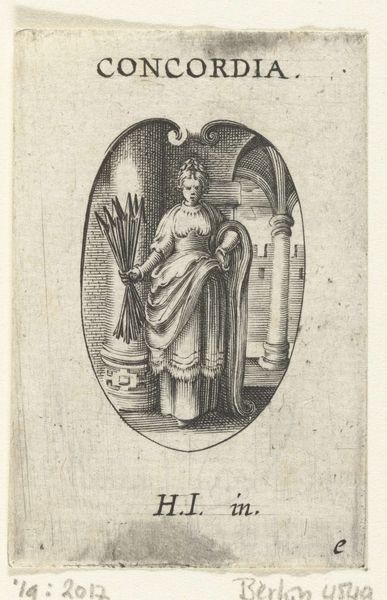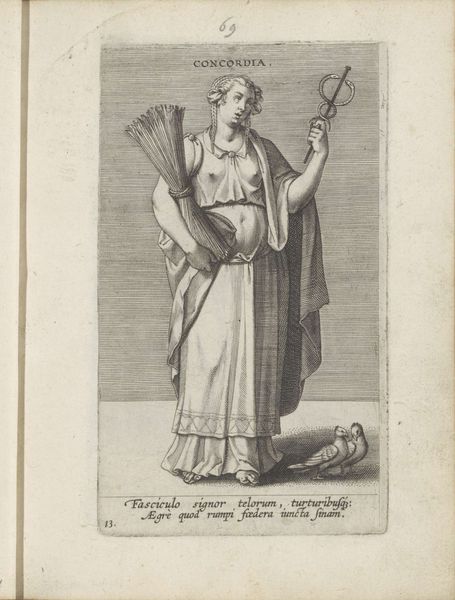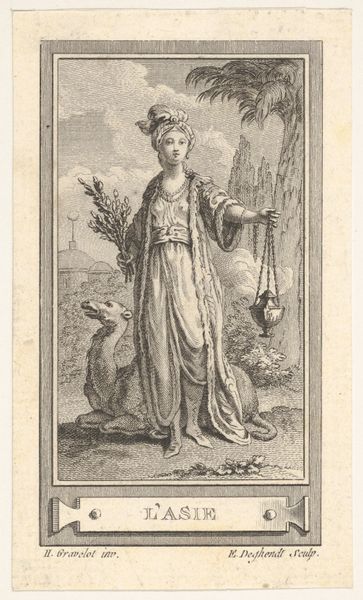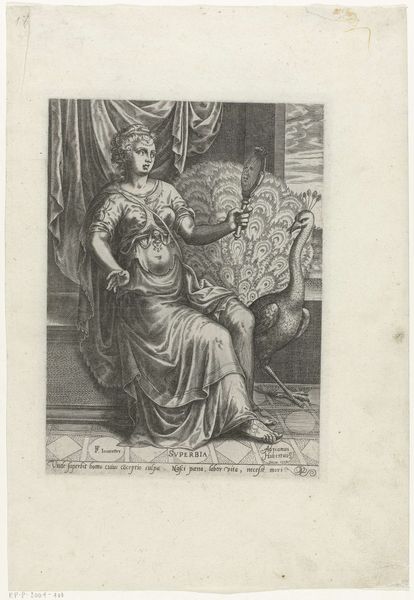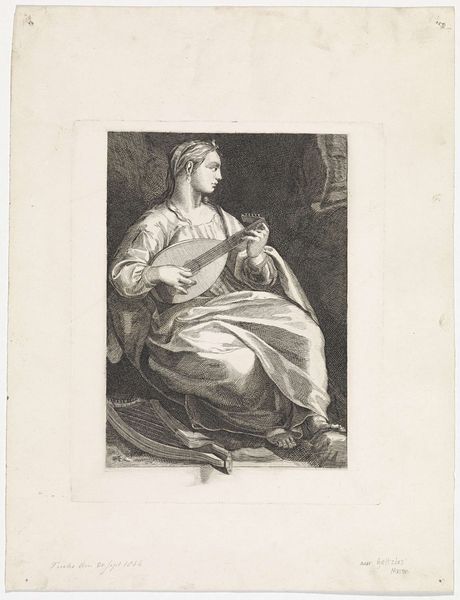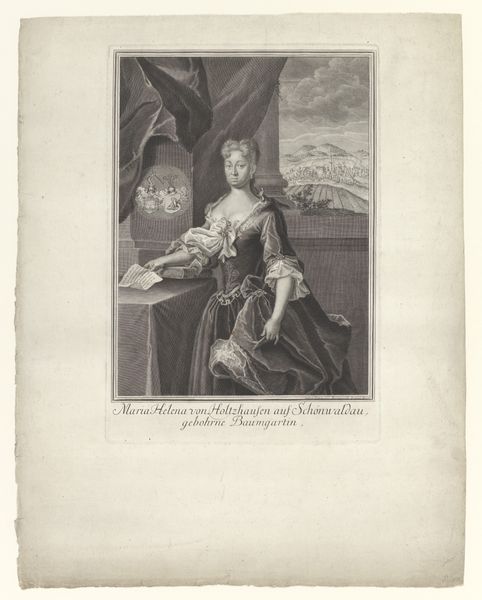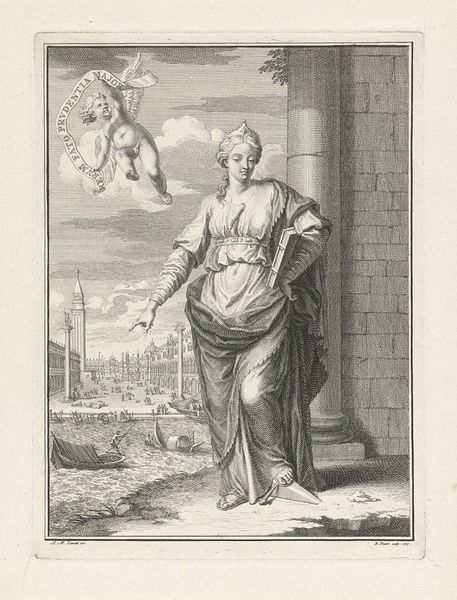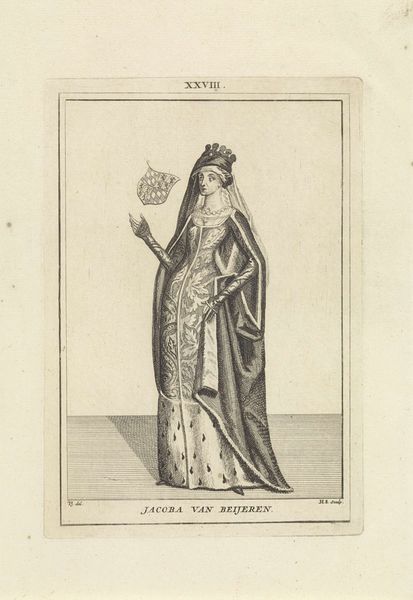
drawing, print, etching, paper
#
portrait
#
drawing
#
neoclacissism
#
allegory
# print
#
etching
#
paper
#
history-painting
Dimensions: 339 × 257 mm (plate); 565 × 395 mm (sheet)
Copyright: Public Domain
Curator: This is Joseph Fratrel’s etching from 1776, titled *Female Personification of Science*, held here at the Art Institute of Chicago. My initial reaction is it feels rather cool and clinical, the grey scale lending it an air of distance despite the very human subject. Editor: Clinical is a good word! Though I'd push further on it. Note how the image draws on earlier visual tropes from classical antiquity while figuring this so-called personification of science. In fact, the term "personification" does so much ideological work already, masking the actual gender politics at play here. Curator: Explain that a little more for me. To me, this classicizing print signifies a commitment to the enlightenment values. It reminds me of classical figures of wisdom holding a mirror and staff; these things create cultural continuity. Editor: Yes, I agree, she reflects values and enlightenment thinking in the visuality of that era. Look at her garment, referencing both Minerva and Venus, both of them representing philosophical wisdom and idealised nature. However, who decided on this “female” allegory? That the very idea of “science” needed feminisation tells its own story about who had control over this supposedly universal domain. What did a male-dominated, Eurocentric view of "science" project on to this female figure? Curator: It does feel more like a carefully constructed emblem than an attempt to reflect the experiences of actual female scientists in that period. The mirror, the winged head, the very formal arrangement, I agree; all feels imposed and heavily symbolic, with nods to a much older symbolic lineage, as in Renaissance paintings. But are those historical and visual reference points simply being recuperated? It looks backwards as much as it looks forwards. Editor: The positioning is important, as her hand guides the reader's gaze towards the instruments: the triangle and the globe. They both hold immense significance in history-painting and map-making. Curator: Looking closely, one wonders what this print meant in the context of, say, the burgeoning American scientific community at that very moment. It could easily have been a visual for revolutionary discussions taking place across the Atlantic. Editor: Yes, in fact this piece, created on the verge of political change and revolution, really gets us thinking about the cultural frameworks and symbolism employed to solidify certain world views in the field of science and politics. Curator: It makes me question the intentions, who exactly was this image intended for, and how would they respond to such strong allegorical, political content and symbolism during those times? What an intricate print and loaded image, full of visual echoes!
Comments
No comments
Be the first to comment and join the conversation on the ultimate creative platform.
